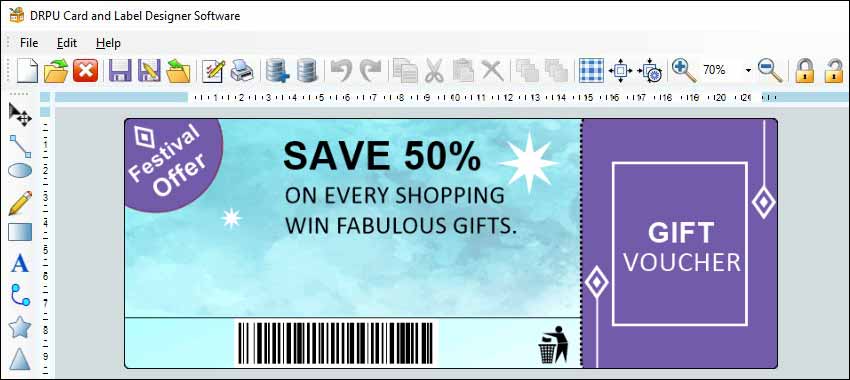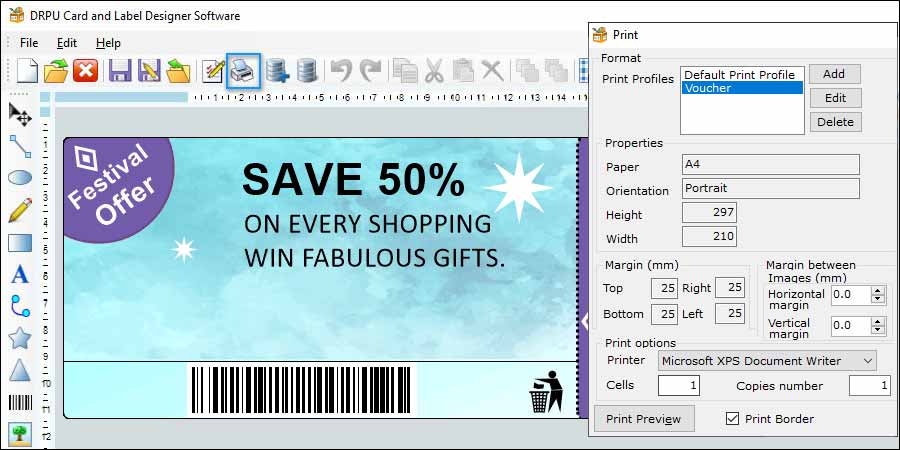Features to look for When Choosing Label Designer Software
When choosing label designer software, there are several key features to consider. These features can make a significant difference in the ease of use, efficiency, and quality of the label designs. Here are some of the features to look for when choosing label designer software:

-
User Interface:
A user-friendly interface is crucial when choosing label designer software. The software should have a clear layout and intuitive navigation that allows users to easily create and customize labels. A good label designer software should have a drag-and-drop interface that makes it easy to add and edit design elements.
-
Design Tools:
A label designer software should offer a variety of design tools to create attractive labels. It should provide basic tools such as text, images, and color palettes, as well as advanced tools such as layering, transparency, and text effects. The software should also allow users to import and export various file formats.
-
Support and Training:
The label designer software provider should offer adequate support and training for its users. This application can include online tutorials, video demonstrations, user manuals, and customer service options and many more. The provider should also offer regular updates and maintenance to ensure the software's functionality.
-
Barcode Support:
The Barcode support is an essential for businesses that need to create labels with label designing software. The software should support various barcode types, including 1D (linear barcode) and 2D barcodes, and provide options for configuring the barcode format and data.
-
Integration:
The software should integrate seamlessly with other business applications and systems. For example, it should be able to connect to a database to automatically populate label fields with data. It should also support various printer models and printing technologies.
-
Automation:
Automation features can save time and reduce errors when creating labels. The software should offer options for automating label printing tasks, such as batch printing, label sequencing, and label merging. These features can also enhance productivity in label creation process.
-
Customizable Templates:
Customizable templates can save time and effort when creating labels. The software should provide a range of customizable templates that users can modify to fit their needs. These templates can include pre-designed layouts, sizes, and shapes for labels.
-
Security:
The software should provide data security features to protect sensitive information. This can include password protection, data encryption, and user access controls. The software provider should also adhere to industry data security standards and regulations.
In summary, when choosing label designer software, it is important to consider the user interface, design tools, customizable templates, barcode support, integration, automation, support and training, and security features. These features can make the label creation process more efficient, productive, and secure.
Best Practices for Designing Labels for Print using Label Designer Software
In this article, we will explore some best practices for designing labels for print using label designer software.

-
Understand your target audience The first step in designing a label is to understand your target audience. Consider the age, gender, education level, and other demographic factors that define your customers. Understanding your audience will help you tailor the design to their preferences, making it more likely for them to buy your product. For instance, if your product is targeting children, you will need to use bright colors.
-
Choose a color scheme The color scheme you choose should be appealing and easy on the person's eyes. Colors can convey different emotions and messages, so it is essential to choose the right color scheme that aligns with your product and brand. For example, blue conveys trust, while green represents health and nature. Use colors that complement each other and create a visual hierarchy to emphasize important information.
-
Use appropriate fonts Fonts play a significant role in label design. Choose a font that is easy to read and clear, such as sans-serif fonts. Avoid using complex, decorative fonts that are difficult to read, as they may discourage potential customers from reading the label. Make sure that the font size is large enough for people to read, and the font color contrasts with the background.
-
Use high-quality images Images are powerful tools in label design. They can convey information quickly and create emotional connections with customers. Use high-quality images that are relevant to your product and align with your brand. Images should be clear, sharp, and of high resolution. Avoid using blurry or pixelated images that may make the label look unprofessional.
-
Keep it simple Simplicity is key when designing a label. Avoid cluttering the label with too much information. Include only the necessary information such as product name, logo, ingredients, and instructions. Use bullet points to organize information and make it easy to read. Avoid using long sentences or paragraphs that may discourage customers from reading the label.
-
Consider the label size The label size is an essential factor in label design. The label should fit the product or container and provide enough space for the necessary information. Make sure the font size and images are proportional to the label size. Avoid using fonts or images that are too small or too large, as they may make the label look unprofessional.
-
Consider label printing requirements Label printing requirements should also be considered when designing labels for print. Factors such as label material, printer type, and printing technology can affect the final output. Make sure the label design aligns with the printing requirements to ensure a successful print job.
-
Use templates Label designer software usually comes with pre-designed templates that can save time as well as effort. Using templates can help you create a professional-looking label quickly and easily. However, make sure to customize the template design to align with your product and brand.
Test the label design with different printing technologies to ensure compatibility. Proofreading is crucial in label design. Make sure to proofread the label design before printing to avoid errors, misspellings, or grammatical mistakes. Proofreading can also help ensure that the label complies with legal requirements such as FDA regulations.